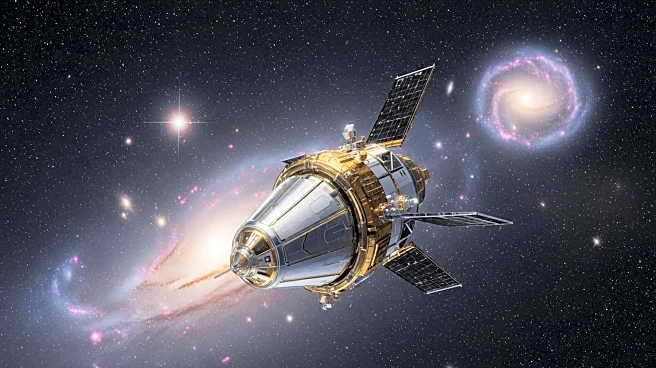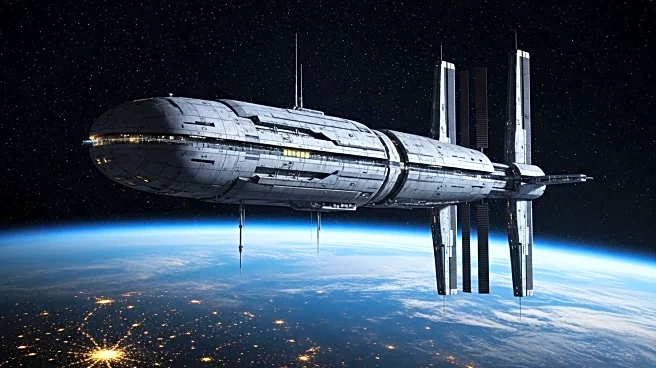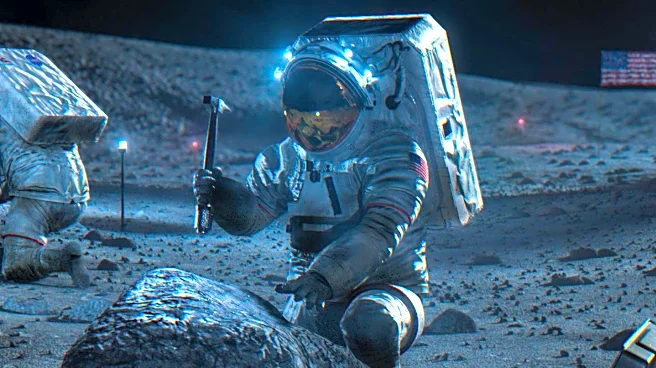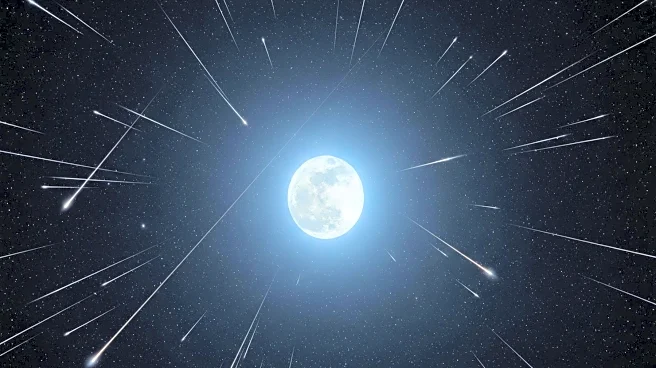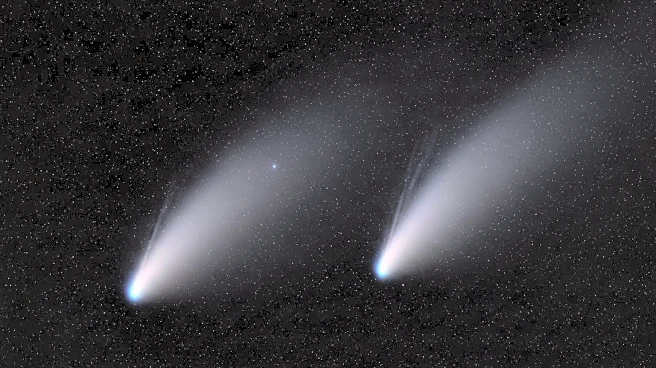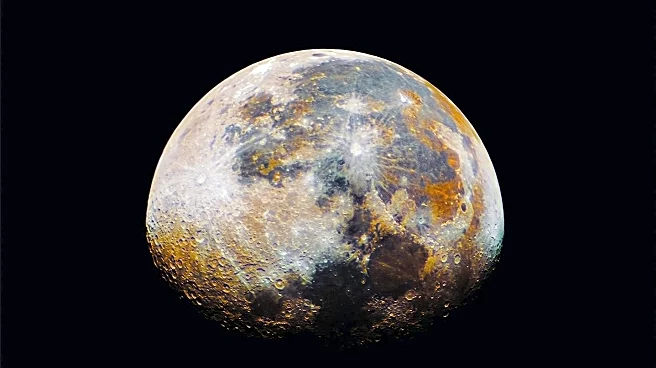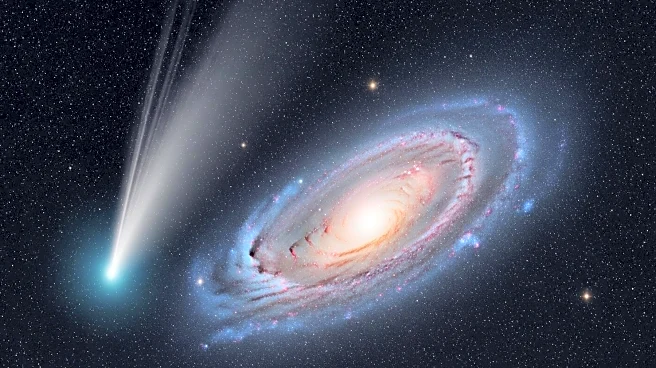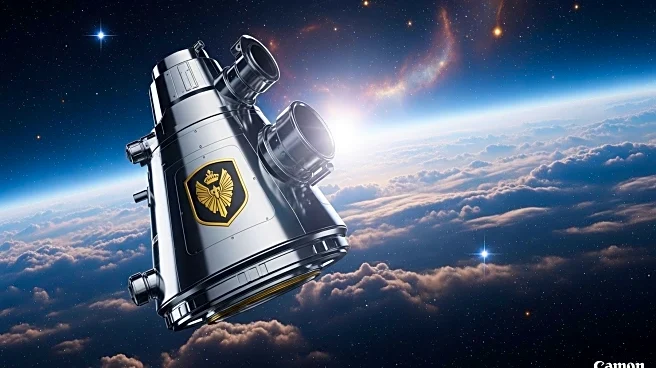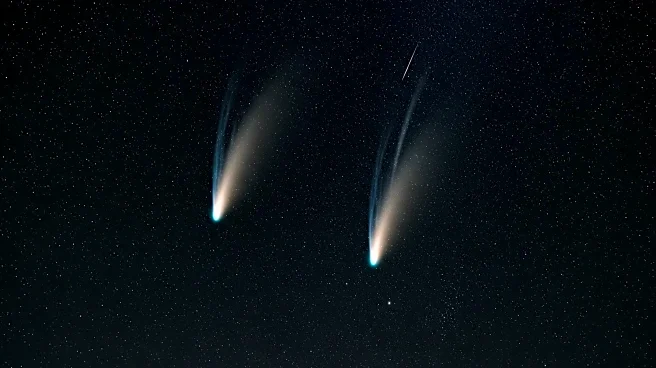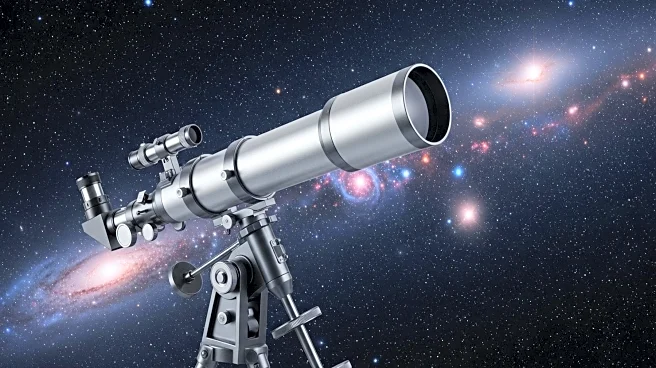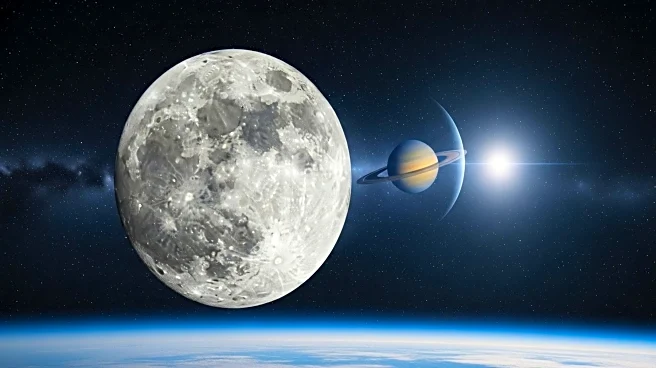What is the story about?
What's Happening?
NASA's Voyager 1, launched on September 5, 1977, is set to achieve a significant milestone in November 2026 by becoming the first manmade object to reach a distance of one light day from Earth. The spacecraft, which was launched to study the outer planets, has been traveling for nearly half a century and is currently located approximately 15.67 billion miles from Earth. Voyager 1 has already crossed the heliopause, entering interstellar space on August 25, 2012. The mission has provided valuable data about the outer planets and the nature of our solar system. Despite its impressive speed of 38,000 miles per hour, Voyager 1 will eventually cease to function around 2036 when it travels beyond communication range and its energy source depletes.
Why It's Important?
The milestone of Voyager 1 reaching one light day from Earth underscores the remarkable achievements of human engineering and space exploration. This event highlights the longevity and success of NASA's mission, which has expanded our understanding of the solar system and interstellar space. The data collected by Voyager 1 has been crucial for scientific research, providing insights into the outer planets and the heliosphere. The mission's success also serves as an inspiration for future space exploration endeavors, demonstrating the potential for long-term space missions and the importance of continued investment in space technology and research.
What's Next?
As Voyager 1 continues its journey, it will eventually travel through the Oort Cloud, a process that could take up to 30,000 years. The spacecraft is on a trajectory towards the constellation Ophiuchus and is expected to pass within 1.7 light-years of a star in the constellation Ursa Minor by the year 40,272 A.D. While the spacecraft will eventually cease to function, its continued journey through space will remain a testament to human curiosity and the quest for knowledge beyond our planet.
Beyond the Headlines
The Voyager 1 mission raises questions about the future of space exploration and the potential for human-made objects to travel beyond our solar system. It also highlights the challenges of maintaining communication and functionality over vast distances and extended periods. The mission's success may influence future policies and funding for space exploration, encouraging the development of new technologies to support long-duration missions and the exploration of distant celestial bodies.
AI Generated Content
Do you find this article useful?
